Almost in the geographical centre of Andalucia the Sierra Mágina Natural Park is an isolated mountainous massif between the high, dry, Granada Altiplano to the south and the more fertile, green, Guadalquivir valley to the north
By Nick Nutter | Updated 22 Sep 2022 | Jaén | Parks |
Login to add to YOUR Favourites or Read Later
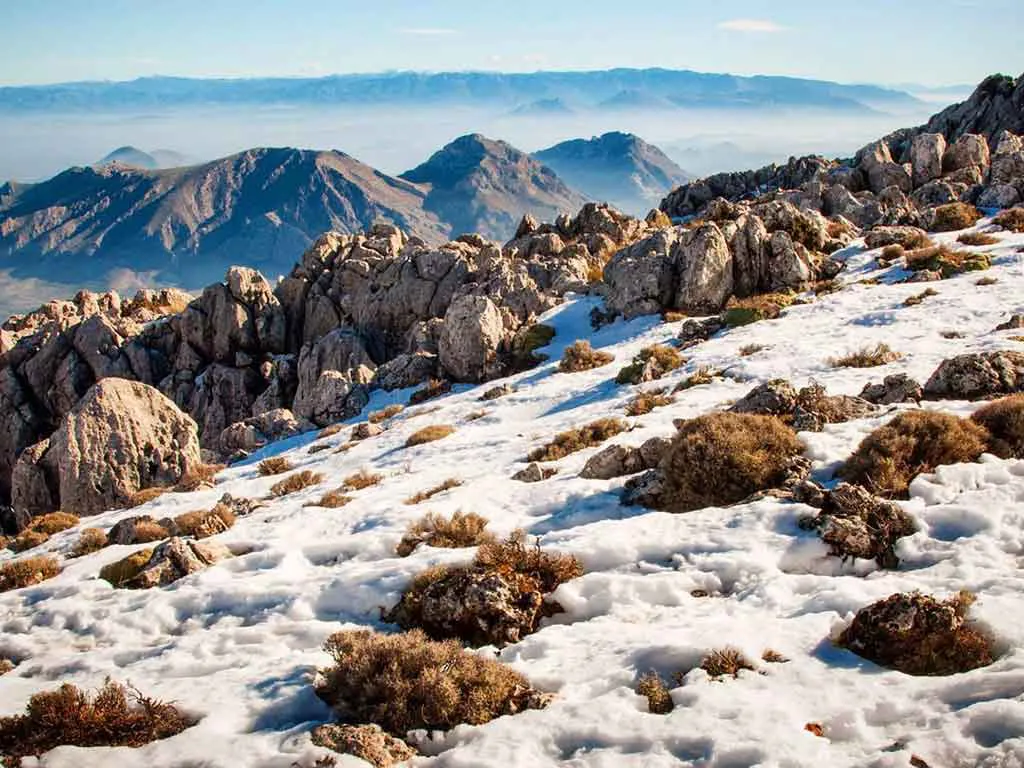
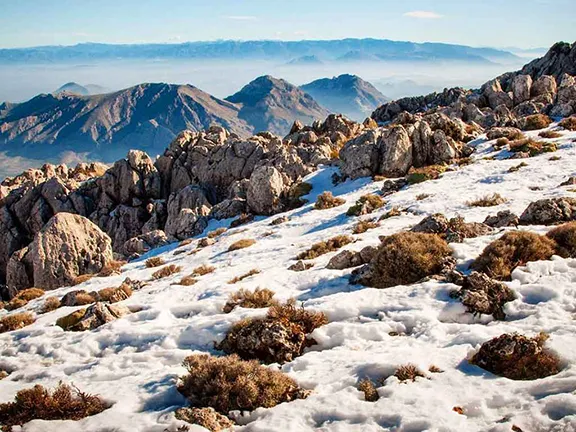
Sierra Magina in winter
Almost in the geographical centre of Andalucia, the 20,000 hectare Sierra Mágina Natural Park is an isolated mountainous massif, easily spotted from north or south. It contains the highest peaks of Jaen province, Magina, at 2165 metres, Almadén – 2033 metres and La Peña – 2014 metres. Part of the Cordillera Subbética, the Sierra Mágina acts as the westerly ‘gatepost’ between the high, dry, Granada Altiplano to the south and the more fertile, green, Guadalquivir valley to the north. The eastern ‘gatepost’ is its easterly neighbour the Sierras de Cazorla.
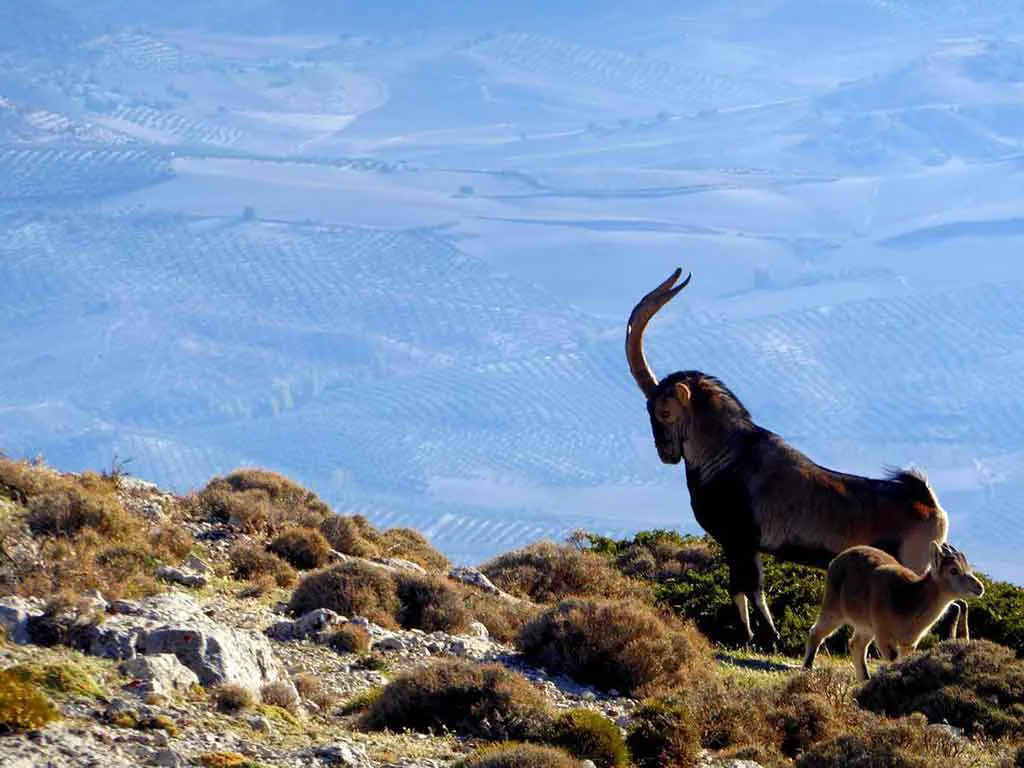
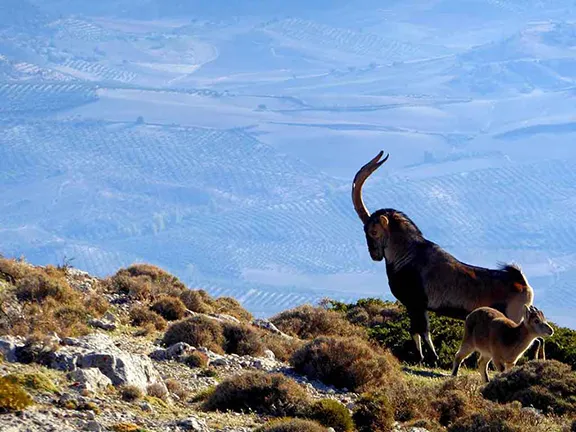
Siearr Magina mountain goat
Often capped by snow in winter, these isolated peaks were called ‘the mountain of the spirits’ by the Moors. During the 13th to 15th centuries the Sierra Mágina formed part of a natural defensive line that divided the kingdoms of Granada and Castille. Castles dot the landscape, protecting the mountain villages. The park’s visitors centre at Jódar is housed in a restored 9th century hilltop fortress.
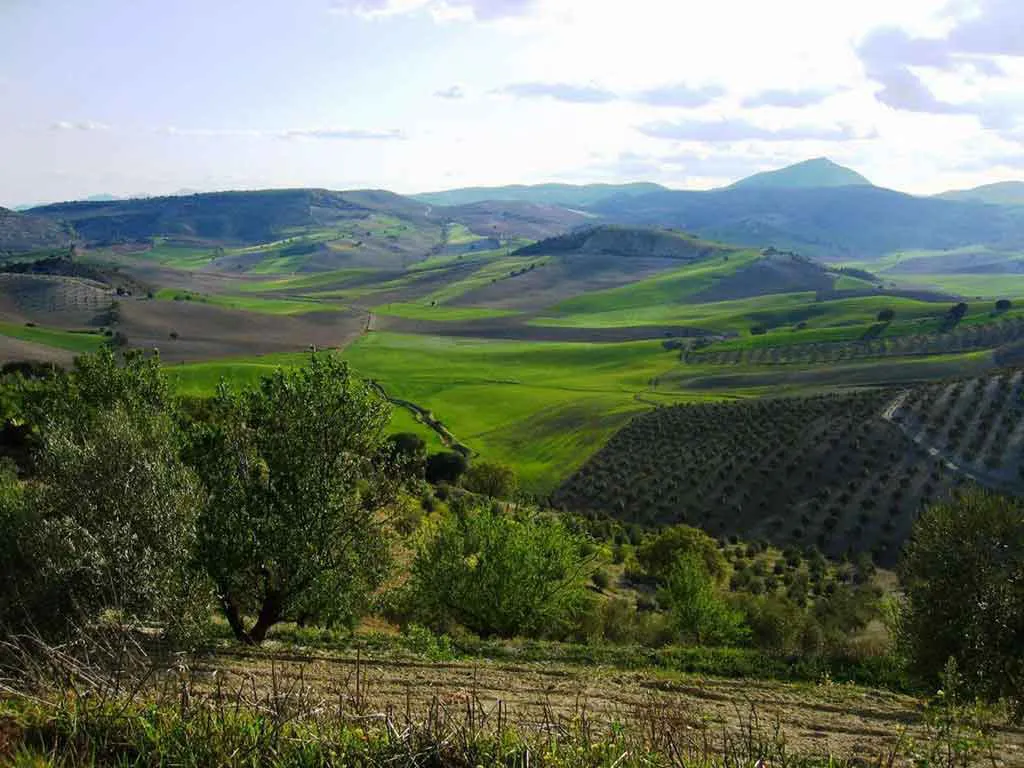
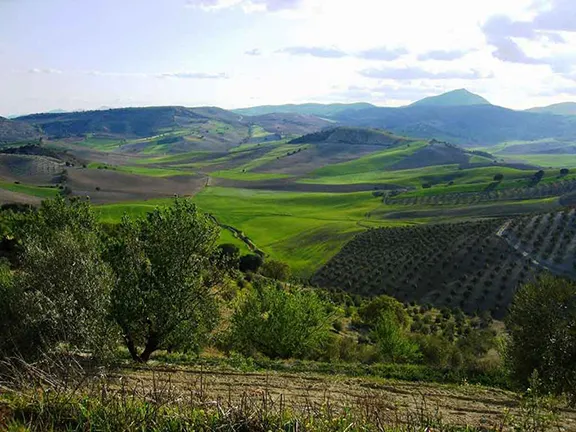
Sierra Magina
Albánchez de Mágina also has a restored castle, this one 11th century, with fantastic views over the Sierra. The medieval fortified town of Bélmez has a 12th-century Moorish castle and two nearby towers, the 13th-century Torre del Sol and, 2km towards Huelma, the 14th-century Torre del Lucero. The villages of Cambil, Huelma and Jimena are also overlooked by, now ruined, castles as old as the 12th century and surrounded by walls that date to the Moorish period.
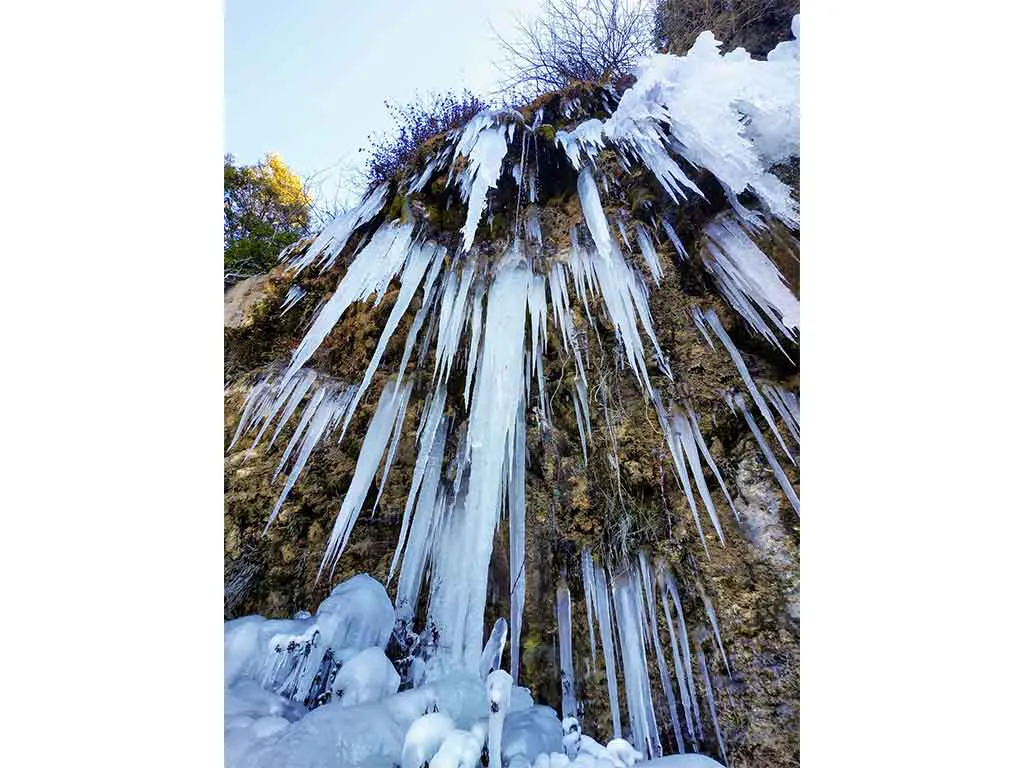
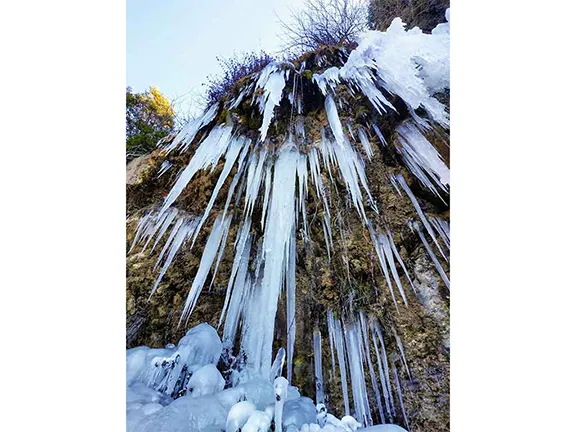
Cascada Zurreon, frozen in winter
One of the easiest towers to access is conveniently close to the Adelfal de Cuadros picnic area, the 13th century Torreón de Cuadros, (actually built by the Castillians) is all that remains of a larger castle built by the Moors in the 12th century to protect the pass that crosses the Sierra from Bedmar to Cambil between the peaks of Sierra Mágina and Almadén. Now restored and open to the public, the tower makes a superb mirador.
The Adelfal de Cuadros picnic area is also the start of two walks. The first, the Sendero del Adelfal de Cuadros is an easy 1 kilometre circular walk through one of the largest oleander groves in the Iberian Peninsula. The second is the Sendero Las Viñas, a 10 kilometre circular walk. This walk encompasses some of the best views towards Úbeda, Baeza and the Guadalquivir.
Other signposted walks are the Sendero de Fuenmayor, an 11 kilometre circular walk that starts at the Fuenmayor picnic area. This walk takes you to the impressive Cascada del Zurreón and through some beautiful cherry and olive groves. During the harshest winters, the waterfall at Zurreón freezes solid. It is a magical sight.
From the Gibralberca picnic area, there is the Sendero de Gibralberca, an easy 4.5 kilometre, circular walk that takes you through mixed woodland and pine plantations with wonderful views of the peaks of Mágina and Almadén.
Geologically, the Sierra Mágina is a limestone massif, somewhat more resistant to corrosion than the surrounding strata. Over millions of years, the surrounding, softer, rock has been weathered away, leaving the Sierra Mágina standing proud. Water permeates through the limestone and emerges as springs, on its way creating caves and caverns. The Sierra Mágina is riddled with these subterranean passages, some of which can be visited by properly equipped cavers. One, Cueva de los Esqueletos in Albánchez de Mágina is so named because, when it was discovered, the cavers found a number of skeletons in the cave, sat in a semi-circle, complete with knives and arrows. Cueva de la Granja in Jimena has a series of Neolithic cave paintings. In Cuevas de Majuelos y Aro in Pegalajar, archaeologists have found stone axes, flint knives, arrowheads and human remains here dating from the late bronze age.
The springs emerge to form streams and rivers, including the Cambil, Bedmar, Pardos and Gargantín that all flow to the Guadalquivir.
The lower slopes of the Sierra Mágina have largely been turned over to the cultivation of olives, figs, cherries and almonds. Somewhat higher, the slopes are covered with Mediterranean forest, holm, cork and gall oaks with occasional maple and cherry trees. The undergrowth is a dense mass of honeysuckle, barberry and hawthorn.
It is above 1800 metres that the landscape becomes most interesting. The Mediterranean forest gives over to yew trees and pines and small shrubs such as hedgehog broom and prickly juniper and then, at the uppermost levels, the landscape becomes a barren landscape of rock and scree where only the hardiest plants survive. It is in these areas that you will find a species of the common vetch unique to the Sierra Magina, vicia glauca ssp.giennensis.
You may be lucky to spot the very rare, blue flowering gromwell. This is a member of the five petalled Lithospermum genus. Its small, blue flowers appear between April and June.
Even rarer is the jurinea fontqueri. This plant only grows in one small patch of ground. It has hairy, grey-green leaves that are crowned by a mauve, thistle like flower in July. In 2018, the Ministry of the Environment and Territory Planning issued a call to "avoid walking through these spaces", since "in addition to being very uncomfortable and dangerous, it can cause a great impact in the few locations of these valuable species.” Likewise, he stressed that the 'Jurinea fontqueri' only exists within the Sierra Mágina Natural Park. In fact, it is a paleoendemism that probably occupied larger extensions of land, gradually becoming a refuge in a reduced area, 1 square metre, of this enclave.
Birds of prey are especially important, and up to eighteen different species have been identified: kestrels, falcon, Bonelli's eagles, griffon vultures and golden eagles. The peaks are home to capiblanco, while the rock thrush build their nests red in the rock cracks; chaffinch, greenfinches and goldfinches live in holm oaks and olive groves. There is an interesting population of mountain goats, which at lower levels is replaced by wild boar.